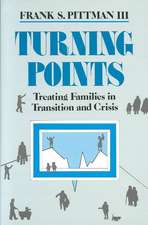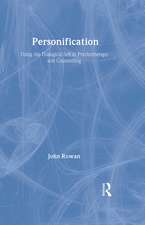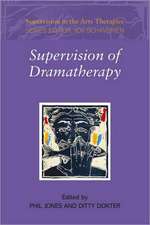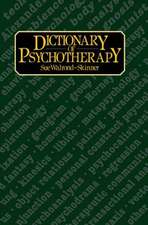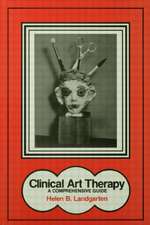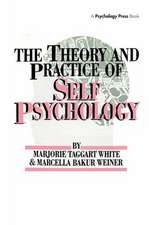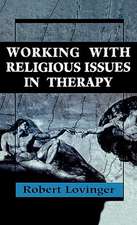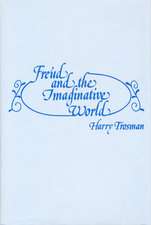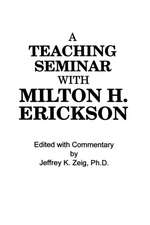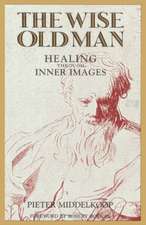Writing, Speech and Flesh in Lacanian Psychoanalysis: Of Unconscious Grammatology
Autor Shirley Zisseren Limba Engleză Hardback – 14 sep 2021
Lacan’s ‘return to Freud’ famously involves a ‘linguistic turn’ in psychoanalysis. The centering of language as a major operator in psychic life often leads to a dualistic or quasi-dualistic view in which language and the enjoyment of the body are polarized. Exploring the intricate connections of the linguistic and the organic in both Lacanian and Freudian psychoanalysis from its beginnings, Zisser shows that surprisingly, and not only in Lacan’s late teaching, psycho-linguistic categories turn out to be suffused with organicity. After unfolding the remnant of the flesh in the signifier as a major component of Lacan’s critique of Saussure, using visual artworks as objective correlatives as it does so, the book delineates two forms of psychic writing. These are aligned not only with two fundamental states of the psychic apparatus as described by Freud (pain and satisfaction), but with two ways of sculpting formulated by Alberti in the Renaissance but also referred to by Freud. Continuing in a Derridean vein, the book demonstrates the primacy of writing to speech in psychoanalysis, emphasizing how the relation between speech and writing is not binary but topological, as speech in its psychoanalytic conception is nothing but the folding inside-out of unconscious writing.
Innovatively placing the flesh at the core of its approach, the text also incorporates the seminal work of psychoanalyst Michèle Montrelay to articulate the precise relation between the linguistic and the organic. Writing, Speech and Flesh in Lacanian Psychoanalysis will be indispensable to psychoanalysts, literary theorists, rhetoricians, deconstructionists, and those studying at the intersection of psychoanalysis, language, and the visual arts.
| Toate formatele și edițiile | Preț | Express |
|---|---|---|
| Paperback (1) | 286.56 lei 6-8 săpt. | |
| Taylor & Francis – 14 sep 2021 | 286.56 lei 6-8 săpt. | |
| Hardback (1) | 1092.86 lei 6-8 săpt. | |
| Taylor & Francis – 14 sep 2021 | 1092.86 lei 6-8 săpt. |
Preț: 1092.86 lei
Preț vechi: 1150.38 lei
-5% Nou
Puncte Express: 1639
Preț estimativ în valută:
209.11€ • 218.33$ • 173.07£
209.11€ • 218.33$ • 173.07£
Carte tipărită la comandă
Livrare economică 04-18 aprilie
Preluare comenzi: 021 569.72.76
Specificații
ISBN-13: 9780367480899
ISBN-10: 0367480891
Pagini: 178
Ilustrații: 10 Halftones, black and white; 10 Illustrations, black and white
Dimensiuni: 156 x 234 x 11 mm
Greutate: 0.38 kg
Ediția:1
Editura: Taylor & Francis
Colecția Routledge
Locul publicării:Oxford, United Kingdom
ISBN-10: 0367480891
Pagini: 178
Ilustrații: 10 Halftones, black and white; 10 Illustrations, black and white
Dimensiuni: 156 x 234 x 11 mm
Greutate: 0.38 kg
Ediția:1
Editura: Taylor & Francis
Colecția Routledge
Locul publicării:Oxford, United Kingdom
Public țintă
Professional and Professional Practice & DevelopmentCuprins
Introduction: ‘The smile is a cut’ 1. Saussurean linguistics and its dis-contents 2. ‘Written in the sand of the flesh’: On modes of writing in the psychic apparatus 3. Speaking the written Epilogue: Chiselled from the real – The feminine signifier
Notă biografică
Shirley Zisser practises Lacanian psychoanalysis in Tel Aviv, Israel. She is a member of the World Association of Psychoanalysis (AMP) and an associate professor of English at Tel Aviv University. Her work focuses on the interrelations between poetics, rhetorical and literary theory and psychoanalysis. Her publications include The Risks of Simile in Renaissance Rhetoric (2001), Critical Essays on Shakespeare’s ‘A Lover’s Complaint’: Suffering Ecstasy (2005, ed.), Lacanian Interpretations of Shakespeare (2009, ed.) and Art, Death and Lacanian Psychoanalysis (Routledge 2018, with Efrat Biberman).
Descriere
This book explores the place of the flesh in the linguistically-inflected categories of Freudian and Lacanian psychoanalysis, drawing explicit attention to the organic as an inherent part of the linguistic categories that appear in the writings of Freud and Lacan.



